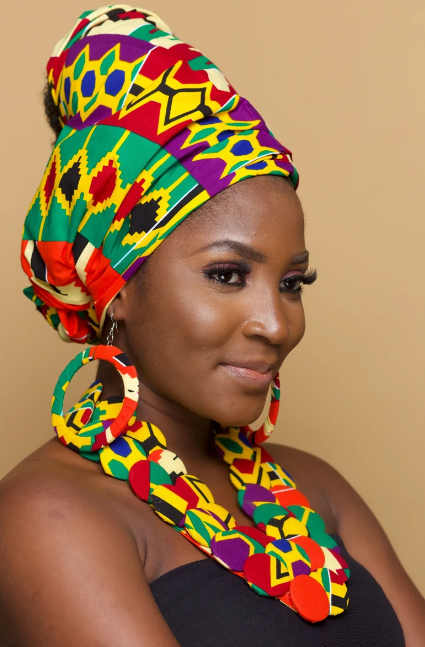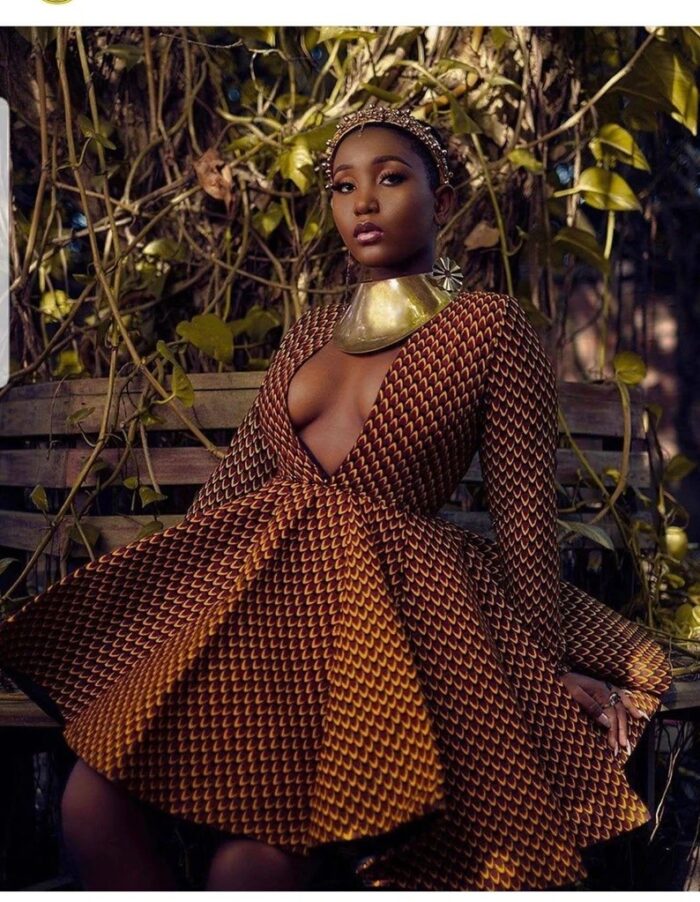WEDDING
9 Headwrap Styles That Are Ideal for Mother of the Bride

when you are a mother of the bride, you style is a key factor during your daughters wedding. Afrocentric headwrap is a good choice when you want to be elegant and stylish during the big day. Headwraps can be worn in different styles, such Nigerian gele to the turban.
These headwraps will give you a statement look and you will be able to stand out in the crowd feel confident and classy . In this guide, we shall be look at 9 beautiful headwrap styles that are ideal for mother of the bride. We will be diving deep into different styles and trends from classic or modern, these style will help you stand out during your daughter’s wedding day.

Cultural Significant of Headwrap for the Mother of the Bride
Whether you are the mother of the bride or mother in law, you can incorporate elegance into your style. Headwraps are a cherished and have deep cultural roots. Headwrap will be a perfect accessory that can lift your looks during the special day.
Afrocentric Headwraps are very important in both African and Middle Eastern cultures. It show respect, modesty, and also link to one’s heritage. By wearing a headwrap, you get to honor your cultural roots. You can also pair the head band with accessory that complements your fashion sense while celebrating the wedding.

Tips and Tricks When Choosing the Fabric
Choosing the right headwrap fabric is key. Always go for high-quality fabrics that look good, durable and will last long. Silk, satin, or African prints are great choices . Make sure the color and pattern match your outfit as well. The right fabric will not only make you look great but also honor the cultural significance of the day.

The Regal Nigerian Gele: A Timeless Classic
The Nigerian Gele is a true classic in traditional African headwrap styles. It has been worn for centuries in the Nigerian culture whether wedding or special occasion. It compliments well with Afrocentric outfits for mother of the bride.
The Gele’s history is filled with cultural importance. Today, the Gele is still a symbol of Nigerian pride. With its timeless beauty and many styling options, the Gele is a true classic. It will surely impress everyone who sees it.
Chic and Sophisticated: The Turban Headwrap
Turban headwrap is another option one can style. This headwrap style is timeless, adding glamour to any outfit.

Tying Techniques for the Perfect Turban
Getting the perfect turban headwrap is simpler than it seems. Choose a lightweight fabric that flows well. Wrap it around your head, leaving a small tail at the back. Then, tuck the tail under the fabric for a smooth look.
Adjust the folds and pleats to get the volume and dimension you want. With these steps, you can easily change your look and rock the chic turban headwrap style.
Whether it’s for a modern turban headwrap for weddings or a special event, this style is a great choice. Follow these easy how to tie a turban headwrap steps.

Headband Wrap

The High Bun Wrap
The high bun wrap is a beautiful HEADWRAP hairstyle that makes you stand out. It combines the classic look of a high bun with the cultural beauty of a headwrap. This creates a truly regal look.

Elegant Updo Variations with a Headwrap
Pair your high bun headwrap with different elegant updos to boost your mother of the bride look. Choose a sleek, polished bun or a soft, romantic chignon for a vintage touch. Adding a headwrap to your updo brings depth, texture, and cultural flair to your look.
Whether you pick a vibrant, patterned fabric or a solid-colored headwrap, the high bun wrap is versatile. It can match your personal style and the mother of the bride outfit.
Intricate and Eye-Catching: The Twisted Crown
Make your mother of the bride look pop with the stunning twisted crown headwrap. This style will add drama and classy as not many wear it. It’s a style that will always complement and always looks elegant with every individual that rocks it.

ALSO READ: The Top 5 Mother of the Bride African Dress Trends for 2024
The twisted crown headwrap stands out with its unique design. Its intricate folds and pleats create a captivating look. It’s perfect for anyone looking to make a statement or find mother of the bride headwrap inspiration.
With the twisted crown headwrap, you can mix cultural elegance with modern style. It’s versatile, fitting any mother of the bride outfit perfectly. Try different fabrics and colors to make it uniquely yours.

Modern and Chic: The Side Knot Wrap
Make your mother of the bride look pop with a modern side knot headwrap. The side band gives drama and create attention on the knot done on the side drawing attention to your hair more hence pairing well with the outfit our choice. This is a perfect head band choice as it has many styles hence it is hard to find someone with the same style making you look unique from the crowd.
The side knot headwrap mixes traditional and modern perfectly.

Textured and Layered: The Layered Wrap
The layered wrap is a standout for mother of the bride headwrap ideas. It adds depth and dimension effortlessly, making your look pop. The secret is in strategically placing and shaping the fabric for a captivating effect.

Creating Depth and Dimension with Layered Wraps
Layered Afrocentric headwrap styles help you play with different designs. You can always incorporate different techniques from folding, twisting, and tucking the fabric, when making the headwrap. This style incorporates light and shadow, giving you a go to look that turns heads. Mix different fabrics and colors to reflect your style. The layered wrap offers endless possibilities, ensuring you make a lasting impression.
The Bow Tie Wrap
The bow tie wrap is a another good choice that adds a bit of fun to your style. It’s a cute way to stand out. Always go for bold, colorful fabric , muted one for your bow tie wrap. It’s a the best choice for a head wrap as it has to be bold to create attention. Always be creative and try different techniques to find the perfect bow tie wrap that highlights your features and shows off your style.

Versatile and Timeless: The Scarf Wrap
As the mother of the bride, you have many ways to make your wedding day look special. The scarf wrap headwrap is a great choice. It’s versatile and timeless, fitting well with many outfits and styles.
Scarf Wrap Styling Tips for Beginners
Learning to style a scarf wrap might seem hard, but it’s easy once you know how. Begin by picking a light, square scarf that matches your outfit. Fold it into a triangle and wrap it around your head, securing it at the back.
Try different ways to wrap it for various looks. You can go for sleek or add volume and texture. Whether your scarf is plain or has patterns, it’s a great way to add something special to your look.
With these tips, you’ll be able to wear scarf wrap headwrap styles that turn heads. They’ll match your versatile headwrap styles perfectly, making you stand out as the mother of the bride scarf wrap.

Conclusion: Embracing Your Inner Radiance as the Mother of the Bride
Your wedding day is a big moment, celebrating your child’s new chapter. Adding a stylish headwrap to your look lets you shine with cultural elegance. It shows off your style and connects you to your heritage.
Choose a classic Nigerian Gele, a chic turban, or a playful bow-tie wrap. Your headwrap will be a standout piece that makes you look confident and unique. You’ll feel great supporting your child and their partner on their big day.
The mother of the bride is more than just about looks. It’s about showing wisdom, grace, and inner beauty. So, wear your headwrap with pride and let your inner light shine. Enjoy the joy and pride of being the mother of the bride.
FAQ
What are the key benefits of wearing a headwrap as the mother of the bride?
Wearing a headwrap adds cultural elegance and sophistication to your look. It connects you to your heritage and makes you look polished and refined for the big day.
How do I choose the right fabric for my headwrap?
Pick fabrics that match your wedding outfit and look good together. Choose high-quality fabrics that make you feel great and look amazing.
Can I incorporate a headwrap into a modern, sophisticated wedding look?
Yes, you can! Headwraps come in many styles for a modern look. Try the turban, side knot wrap, or layered wrap for elegance and cultural flair.
What are some popular headwrap styles for the mother of the bride?
Popular styles include the regal Nigerian Gele, chic turban, easy headband wrap, and textured layered wrap.
How can I style my headwrap to create an elegant updo?
Try the high bun wrap for a sophisticated look. It’s perfect for the mother of the bride, adding elegance to your updo.
Can I find headwrap styles that are both modern and culturally significant?
Yes, many headwrap styles mix modern style with cultural significance. The twisted crown, side knot wrap, and scarf wrap are great choices for adding both style and cultural flair.
How can I incorporate a playful and fun element into my headwrap style?
The bow tie wrap adds whimsy and personality to your look. It’s a fun twist on traditional headwrap styles.
Where can I find inspiration for styling my headwrap as the mother of the bride?
Look for inspiration on fashion blogs, wedding magazines, and social media. Use these resources to find the perfect headwrap style for your big day.
WEDDING
Complete Your Look with These 5 Must-Have African Wedding Accessories

When it comes to African Wedding Accessories, the intricate details and unique colors of traditional attire steal the show. Elevating your ensemble with the perfect accessories is key to embracing the rich cultural heritage and making a statement on your special day. From beads to headpieces, these must-have African wedding accessories will complete your look with elegance and style:
1. Beadwork Brilliance
Beads hold immense cultural significance in African Wedding Accessories. Incorporate them into your look through:
- Beaded Necklaces: Adorn your neckline with vibrant, intricately crafted beadwork. Choose from traditional patterns and colors that complement your attire.
- Beaded Bracelets: Stack beaded bracelets on your wrists for a pop of color and cultural significance. Mix and match different sizes and designs for a personalized touch.
- Beaded Anklets: Accentuate your footwear with beaded anklets that beautifully frame your feet and add a touch of traditional elegance.
ALSO READ: 20 Best Afrocentric Kids’ Outfit Ideas for Every Occasion

2. Headpieces That Speak Volumes
The crowning glory of your wedding ensemble often lies in the headpiece. Embrace the beauty of African Wedding Accessories:
- Gele: This elaborate headwrap is a symbol of elegance and sophistication. Experiment with various fabrics and styles to find the perfect Gele that complements your outfit.
- Beaded Headbands: Infuse your hairstyle with a beaded headband, a timeless accessory that exudes cultural heritage. Opt for intricate beadwork that stands out and adds a regal touch to your look.
3. Traditional Accents
Don’t forget these essential African Wedding Accessories that complete the African wedding attire:
- Waist Beads: Worn around the waist, these beads symbolize femininity, sensuality, and cultural heritage. They’re often hidden but hold significant cultural value.
- Cowrie Shell Jewelry: Incorporate cowrie shells into your accessories, whether as earrings, necklaces, or bracelets. These shells are steeped in African tradition and add a unique, earthy touch.
4. Personalized Touches for African Wedding Accessories
Customize your African Wedding accessories to reflect your unique style and story:
- Customized Beadwork: Collaborate with local artisans to create bespoke beadwork that incorporates your initials, wedding date, or meaningful symbols, making your accessories truly one-of-a-kind.
- Family Heirlooms: Consider wearing family heirlooms passed down through generations. These pieces not only add sentimental value but also contribute to preserving cultural traditions.
5. Fusion of Modern and Traditional
Experiment with blending modern fashion elements with African Wedding Accessories:
- Beaded Clutches: Opt for a modern clutch adorned with African beadwork. This fusion of contemporary design and traditional craftsmanship adds a touch of sophistication to your ensemble.
- Innovative Headpiece Designs: Explore contemporary headpiece designs inspired by traditional elements. Experiment with unconventional shapes and styles while staying true to the essence of African heritage.
Conclusion
In conclusion, incorporating these must-have African wedding accessories—be it beads, headpieces, or traditional adornments—will undoubtedly elevate your bridal ensemble, allowing you to celebrate culture, heritage, and style on your special day. Whether you choose one standout piece or a combination of several, these African Wedding Accessories will complete your look with elegance and grace.
ALSO READ: Swanky Jerry’s Influence on African Fashion
Furthermore, by opting for Afrocentric wedding accessories, you’re not only making a sartorial statement but also supporting the artisans and craftsmen who meticulously create these pieces. It’s a way of contributing to the preservation and promotion of African culture, which is essential in a globalized world where traditions can sometimes fade into obscurity.
WEDDING
Top 5 Guidelines for Afrocentric Wedding Party Attire
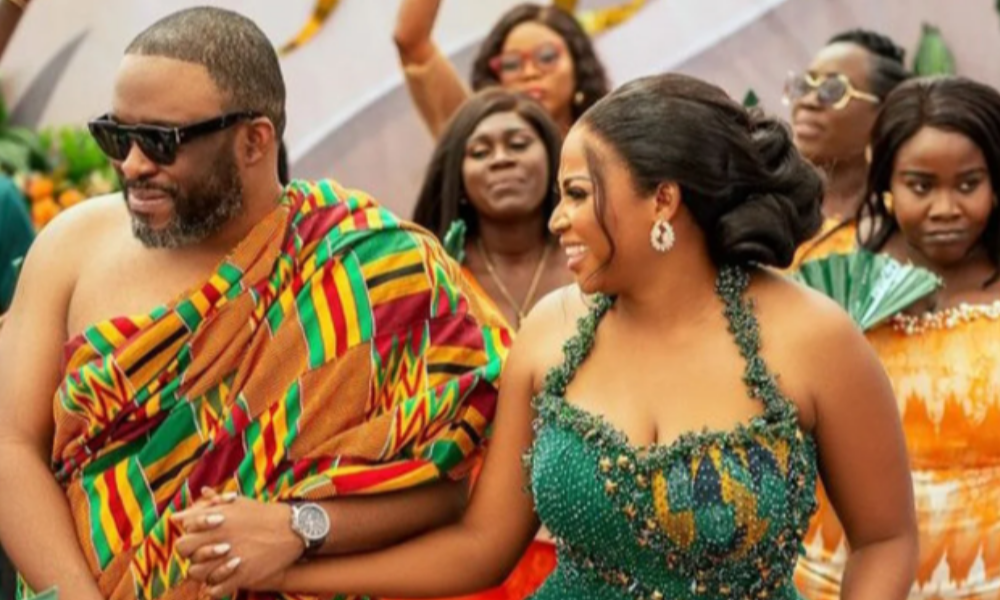
Afrocentric Wedding Party Attire are vibrant celebrations that beautifully blend tradition, culture, and modern style. Ensuring that your wedding party attire reflects the essence of Afrocentric themes while maintaining elegance and cohesion is key to creating a memorable event. Here are some guidelines to help you plan the perfect Afrocentric wedding party attire.
Bridesmaids Wedding Party Attire






For Afrocentric weddings, bridesmaids’ dresses can be a wonderful expression of cultural heritage. Incorporate bold patterns, vibrant colors, and traditional fabrics such as Ankara or Kente.
Tips:
- Cultural Patterns: Choose dresses with traditional African prints that align with the wedding’s color scheme.
- Mix and Match: Encourage bridesmaids to select styles that suit their body types while staying within the chosen color palette.
- Accessories: Consider adding headwraps or African-inspired jewelry to complete the look.
Groomsmen Wedding Party Attire
Groomsmen’s attire can also reflect Afrocentric themes while remaining formal and sophisticated. Suits or tuxedos can be tailored with African fabric accents.






Tips:
- Coordinated Accents: Use matching ties, pocket squares, or vests made from traditional African fabrics.
- Footwear: Opt for comfortable yet stylish shoes, potentially incorporating African patterns or colors.
- Cultural Elements: Consider traditional garments like dashikis or agbadas for a unique and cultural touch.
Mothers of the Bride and Groom Wedding Party Attire
The mothers of the bride and groom can wear elegant Afrocentric attire that honors their role and the occasion. Dresses made from rich, colorful fabrics such as lace or Aso Oke can be both stylish and appropriate.
Tips:
- Timeless Elegance: Choose knee-length or tea-length dresses in colors that complement the wedding palette.
- Comfort and Style: Ensure the dresses are comfortable and suitable for the day’s events.
- Accessories: Incorporate headwraps, beaded necklaces, or traditional shawls to enhance the look.






Flower Girls and Ring Bearers
Flower girls and ring bearers can add a touch of charm and cultural pride to the ceremony with their Afrocentric outfits.
Tips:
- Simple Yet Stylish: Opt for simple dresses for girls in African prints and suits or slacks with African print bow ties for boys.
- Comfort is Key: Ensure the outfits are comfortable and easy for the children to move in.
- Adorable Accessories: Add flower crowns, beaded bracelets, or small sashes to their attire.
General Guidelines for the Wedding Party
When it comes to Afrocentric wedding attire, the key is to avoid anything too casual or too revealing. Dresses, skirts, blouses, jumpsuits, suits, and tuxedos can all be appropriate options depending on the wedding’s formality.



Tips:
- Unified Theme: Ensure that all members of the wedding party adhere to the Afrocentric theme while feeling confident and comfortable.
- Clear Communication: Discuss attire expectations clearly with the wedding party and provide visual guidelines or mood boards.
- Timely Fittings: Schedule fittings and complete any necessary alterations well in advance of the wedding day.
Conclusion
Creating a cohesive and culturally rich Afrocentric wedding party attire involves thoughtful planning and clear communication. By incorporating traditional fabrics, vibrant colors, and cultural elements, you can ensure that your wedding party looks stunning and feels comfortable. Following these guidelines will help you achieve a beautiful and harmonious look that celebrates African heritage and enhances the overall wedding experience.
WEDDING
Fascinating Africa’s Rich and Diverse Marriage Traditions
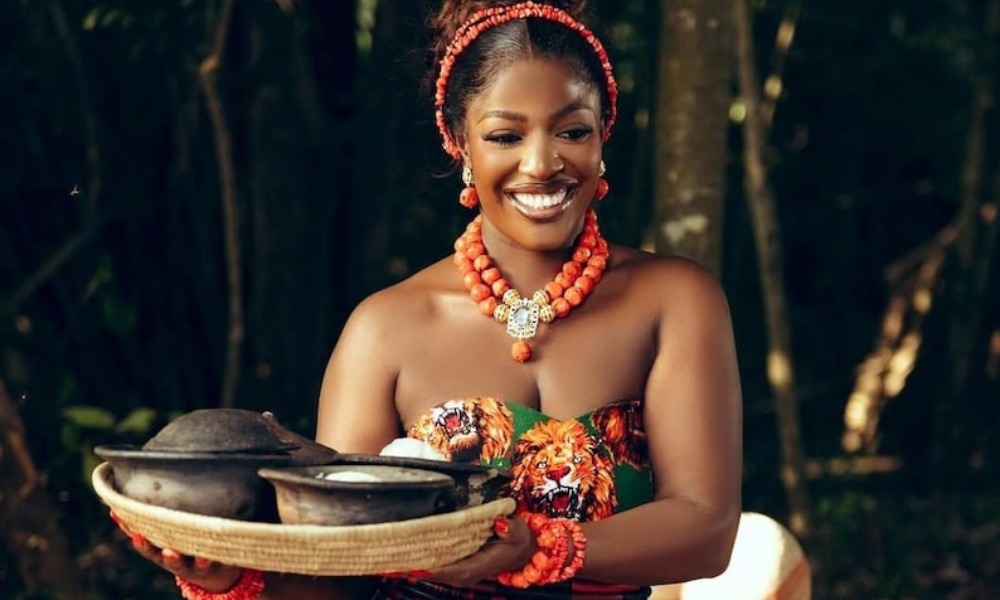
I. The Fabric of Matrimony
A. Unraveling the Misconception of a Single “Marriage Traditions”
The continent of Africa, a landmass of unparalleled cultural richness, is home to a misconception often perpetuated in global discourse, the idea of a single “African wedding.” This monolithic view fails to capture the intricate tapestry of traditions woven across 54 countries and thousands of distinct ethnic groups.
For example, Nigeria alone is home to over 250 ethnic groups, each with its own unique and deeply rooted cultural norms governing the institution of marriage. This vast diversity ensures that no single ceremony, ritual, or set of customs can represent the entirety of African matrimonial practice.
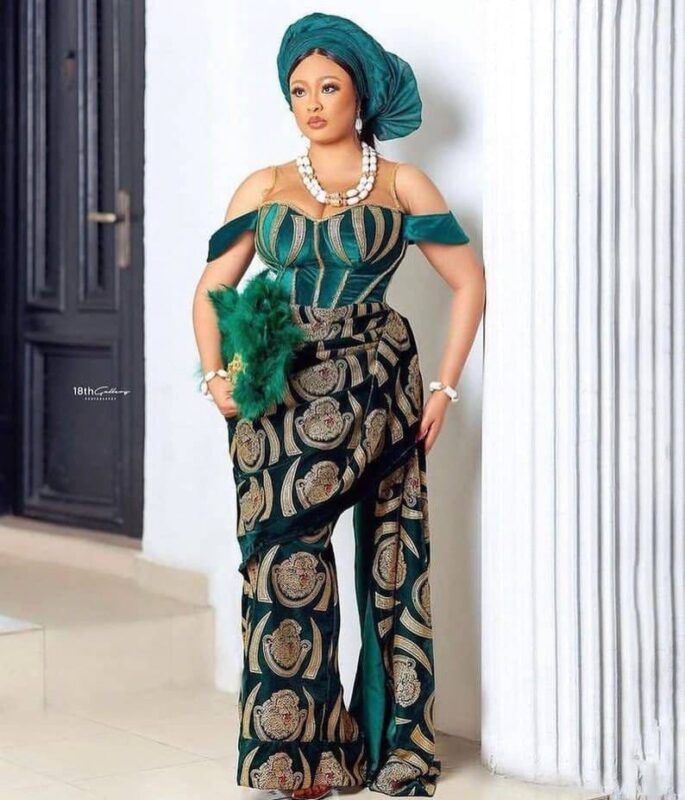

Despite this extraordinary variety, a fundamental and unifying thread runs through nearly all African cultures: marriage is not merely the union of two individuals, but a profound and binding alliance between two families and their wider communities.
This communal emphasis shapes every stage of the marriage process, from the initial negotiations to the post-ceremony rituals. The traditions are designed to formalize new kinship ties, foster mutual respect between families, and ensure the support of the entire community for the new couple, highlighting a collectivist worldview that stands in contrast to the more individualistic approaches often seen in Western societies.
Igbo Wedding Attire for Bride
Bride outfits for that special occasion. The bride’s attire is made up of George fabric majorly worn by the Igbo-speaking Part of Nigeria.
Red Igbo African Wedding Dress
This unique dress is made of quality fabric.
B. The Central Role of Ritual and Attire
The journey to matrimony in Africa is a narrative told through a rich visual and ritualistic language. Attire, in particular, serves as a central narrative device, a form of non-verbal communication that conveys social status, lineage, and the bride and groom’s transition to a new life stage.
A garment or a headdress is more than just an outfit; it is a historical artifact, a symbol imbued with deeply held cultural beliefs that tell the story of a family and a community. The enduring nature of these traditions does not, however, preclude their evolution.
Isiagu African Wedding Dress
This will make you look originally African by aligning you with the cultural fabric and styling.
In a world shaped by globalization and urbanization, many modern African couples are creating unique hybrid ceremonies that honor their heritage while embracing contemporary ideals.
It is a common practice for a couple to hold both a traditional wedding, steeped in the customs of their ancestors, and a Western-style “white wedding” to satisfy modern legal and social expectations. This blending of ancient and modern practices demonstrates the dynamic and resilient nature of African culture, which adapts without losing its core identity.
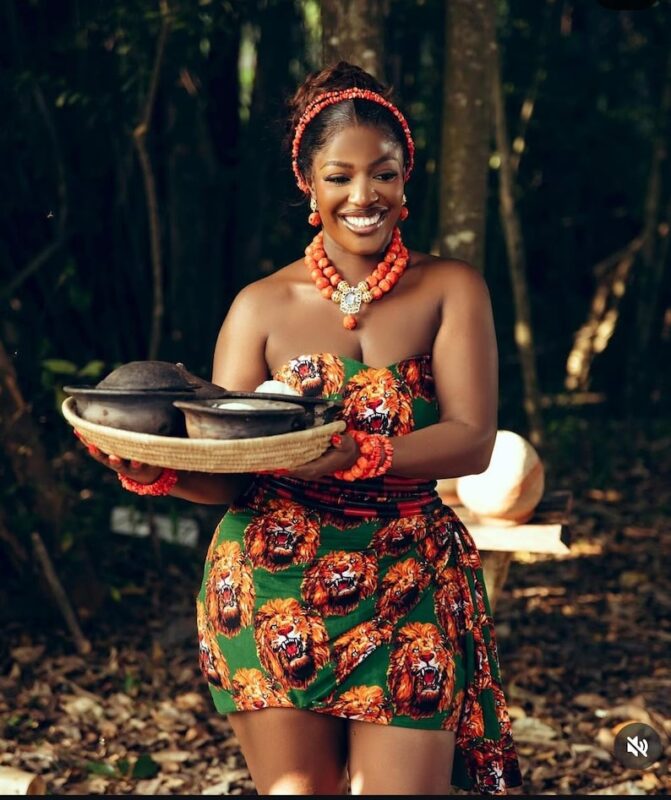
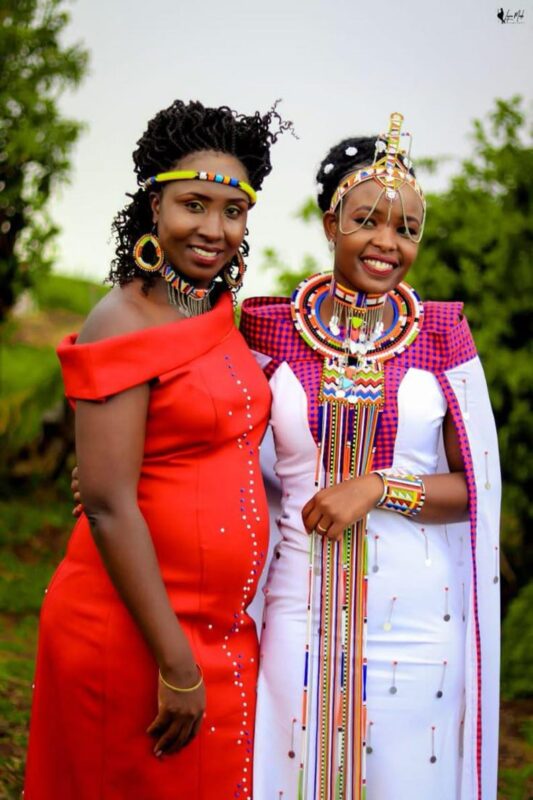
ALSO READ: Top 15 Do’s and Don’ts of Afrocentric Guest Attire
II. The Foundational Pillars of African Union
A. Bridewealth, Not Dowry: A Critical Distinction
A foundational concept in many African marriage traditions is bridewealth, a term that is frequently and incorrectly equated with the Western concept of dowry. Understanding the distinction is essential. Bridewealth, also known as “bride price” or “lobola,” is a payment or transfer of goods made by the groom or his family to the bride’s family.
This is in direct contrast to a dowry, which is a transfer of wealth from the bride’s family to the groom’s. The practice, which dates back thousands of years, is a symbolic act that solidifies the marriage alliance and legitimizes the union in the eyes of the community.
The symbolic and economic purposes of bridewealth are multifaceted. It is first and foremost a token of gratitude to the bride’s family for raising a “wonderful woman” and a gesture of respect for her upbringing and labor.
It is also an expensive pledge that demonstrates the groom’s commitment and his capacity to provide for his new family. In a traditional sense, bridewealth is also a way to formalize the transfer of sexual and reproductive rights from the bride’s family to the groom’s, ensuring that any children born from the union will belong to the husband’s lineage.
In African society, the tradition of bridewealth has evolved significantly. While it was historically paid in livestock, such as cows, goats, or sheep, the modern practice often involves money, a combination of cash and animals, or other commodities.
The amount is often negotiated by family representatives and can be influenced by the bride’s educational background and her family’s social standing, reflecting the tradition’s adaptation to modern economic realities.
ALSO READ: Can I Wear A White Dress To An African Traditional Wedding?
B. The Knocking Ceremony: A Formal Request for Kinship
Before the formal negotiations for marriage can even begin, many West African cultures observe a ritual known as the “knocking ceremony.” In Ghana, for example, this is called kokooko, which translates to “knocking on the door”.
On a prearranged night, the prospective groom and a delegation of his family members visit the bride’s home. They ceremonially “knock” on the door to seek permission to enter.
Once invited inside, the groom’s family presents a variety of gifts, which may include wine for libation, money, and kola nuts, and formally announces their intention to seek the bride’s hand in marriage.
The ceremony serves as a respectful and traditional way of initiating the marriage process, demonstrating the groom’s sincerity and good faith to the bride’s family. It is a crucial first step that must be completed before any further discussions can proceed.
In modern times, particularly within the African diaspora, this ritual has adapted. While it may no longer involve a literal “knocking on the door,” the symbolic act of gaining a family’s blessing remains a vital and respected tradition, sometimes formalized through a family dinner or even a phone call.
ALSO READ: 11 Stunning Non-traditional African Wedding Dresses
III. A Journey Across the Continent: Regional Traditions in Detail
A. West African Nuptials: The Yoruba of Nigeria
The Yoruba people, a major ethnic group in Nigeria, have one of the most elaborate and richly detailed marriage processes, known as Igbeyawo.It is a multi-stage affair that involves a meticulous series of rituals and symbolic exchanges. The process often begins with an intermediary, the
Alarina, who communicates the man’s interest to the woman and her family.Once the families agree to the union, they proceed to a formal meeting and the creation of the
Ẹrú Ìyàwó, or engagement list.This list, which is often drafted by the bride-to-be and her family, details a host of items the groom must provide for the ceremony, ranging from food items like yam and honey to jewelry and new outfits.
A central moment in the ceremony is the Idobale, where the groom and his male friends prostrate themselves fully before the bride’s family. This act, traditionally performed seven times in modern ceremonies, is a powerful display of humility, respect, and gratitude for being granted the honor of marrying their daughter. This act visually reinforces the core value that marriage is a family alliance, not just a personal choice.
Another powerful symbolic ritual is the “Tasting of the Four Elements”. During the ceremony, the couple is presented with four distinct flavors—sour, hot, bitter, and sweet—which they must taste. Each flavor represents a different stage of a shared life.
The bitter flavor, often from a lemon or vinegar, reminds them of the hardships they may face, while the sweet honey symbolizes the joys of their union. The ritual is a profound, pragmatic, and experiential vow, preparing the couple for the full reality of their commitment by having them physically confront the emotional ups and downs of married life.
Yoruba ceremonies are also a vibrant display of visual unity through the tradition of Aso-Ebi, which means “family cloth”. Both the bride’s and groom’s families, along with close friends, select and wear coordinated fabrics and designs, visually signifying their closeness and solidarity. The attire itself is a study in elegance and detail. The groom wears a grand, flowing robe known as an
agbada, with a soft, hand-woven cap called a fila. The bride, in turn, is adorned in a loose-fitting blouse (buba), a fabric wrap (iro), and an intricately sculpted head tie (gele), all cut from the hand-woven aso-oke fabric.
For the uninitiated, the “color of the day” is a subtle but clear social cue, helping to distinguish which family a guest belongs to before the two clans are officially joined in a single union.
Trendy Women Africa Wedding Wear
This is a great fabric design handmade in Africa to bring to you a royal African feel.
B. Southern African Unions: The Zulu of South Africa
In Southern Africa, the Zulu people follow a distinct marriage journey that begins with the lobola negotiations and culminates in the Umabo ceremony.
Lobola is the bridewealth payment, traditionally made in cattle or their monetary equivalent, and serves as the initial, crucial step in the marriage process. The groom’s family will often write a formal letter to the bride’s family to initiate this process.
After the lobola is negotiated and paid, a Zulu couple will often hold a “white wedding,” followed by the Umabo, which is the traditional wedding ceremony held at the groom’s family home.
The Umabo is a series of rituals focused on the bride’s symbolic transition from her family to her new home. A highlight of the ceremony is the competitive “dance-off” between the families of the bride and the groom.
3 in 1 White and Gold Zulu HatI Large Zulu Hat
This ritual antagonism symbolizes the emotional tension of one family “losing” a daughter and the other “gaining” her, a moment of good-natured conflict that is resolved through communal song and dance.
During the ceremony, the groom’s family ceremonially slaughters a cow to welcome the bride into their lineage. In a poignant moment, the bride places money inside the cow’s stomach, an act that signifies her willing acceptance into her new family.
The ceremony concludes with the Ukwaba tradition, where the bride presents blankets as gifts to her new family members, including the deceased ancestors, with the living relatives receiving and publicly covering themselves with the blankets as a sign of their approval and acceptance.
Zulu bridal attire is rich with symbolism. The bride wears a traditional cow-hide skirt called an isidwaba and an iconic headdress known as an isicholo. The isicholo is far more than a decorative hat; it is a powerful public signifier, traditionally reserved for married women, that communicates her new status to the entire community and signifies her respect for her husband’s family.
Its flared, disk-like shape, often colored with a red ochre mixture, developed from a 19th-century hairstyle and symbolizes beauty and femininity. Additionally, some Zulu and Swazi brides carry a small knife pointed upwards as a symbol of their virginity. The position of the knife is changed to point downwards after the marriage is consummated, providing a unique and tangible symbol of this life transition.
C. Eastern African Celebrations: The Maasai of Kenya and Tanzania
Marriage in the Maasai community is a rite of passage that is often arranged by elders, sometimes without the consent of the bride or her mother. The process begins when a young man expresses his admiration for a girl to his parents, who then approach her family to ask for her hand in marriage.
If the bride’s family agrees, the groom’s parents return with the bridewealth, which is traditionally a specific number of cows, typically 8, 10, or 12, depending on the groom’s ability to afford them.
One of the most well-known and visually striking Maasai rituals is the father’s blessing. As the bride leaves her home, her father spits on her forehead as a farewell blessing, an act that may seem unusual but is a deeply symbolic gesture of good luck and a final send-off to her new life.
The bridal attire is also steeped in symbolism. Both the bride and groom wear garments made of cow skin and apply red ochre to their heads for beauty.A Maasai bride’s most remarkable accessory is her wedding necklace or collar, which is created by her mother and functions as a symbolic map of her village.
The large leather circle, covered in brightly colored beads and geometric shapes, features a central hole that represents the heart of the village where the cattle are kept. The strings of beads that hang from the collar symbolize the bridewealth of cattle given by the groom’s family.
This transforms a piece of jewelry into a profound narrative, with the bride literally wearing her heritage and the story of her union on her neck. It is a powerful example of how culture, history, and identity are woven into the very fabric of traditional attire.
African Head Wrap and Jewelry Set
The headwrap is the perfect hair accessory for any occasion and will complement and bring life to any outfit. Wear it as a casual piece with a simple top and jeans or create a wonderful headpiece to finish off an elegant outfit.
**Headwrap and jewellery pieces are sold separately.
Head Wrap
– Handmade in Nigeria
– Size: 72 (L) x 22 (w) Inches
– Primary Colour(s): Red
ALSO READ: 13 Traditional African Clothing That Identifies African Tribes At A Glance
D. The Coastal Rites: The Swahili Henna Ceremony
Along the coasts of Kenya and Tanzania, Swahili weddings, or Harusi, are multi-day celebrations that feature an elaborate and deeply significant henna ceremony. This ritual is seen as a key rite of passage for the bride, marking her transition from girlhood to womanhood and from her family home to her new marital life.
For two to three days, the bride remains secluded behind a curtain as a Somo, or older female teacher, applies intricate henna designs to her hands, arms, and feet. The designs, which may be floral, geometrical, or arabesque, are believed to bring blessings and good luck to the couple’s union. The ritual serves a dual purpose: it is a physical act of beautification and a crucial period of psychological and social preparation for the bride, as the
Somo instructs her on her new marital duties and how to please her husband. The Swahili henna ceremony, therefore, is not just about external adornment but about the passing of wisdom and the clarification of social expectations for a new stage of life.
IV. A Global Tapestry: Modernity, Diaspora, and Blending Traditions
A. The Blending of Worlds
In the 21st century, African marriage traditions are not static artifacts but living, evolving systems. The influence of globalization and Western ideals has led to a widespread trend of couples having multiple wedding ceremonies, combining a traditional, culturally-specific event with a Western-style “white wedding” in a church or civil registry.
This blending of ceremonies reflects a desire to honor both ancestral heritage and modern-day identity.This shift is part of a broader transformation of family structures. Urbanization and increased female financial independence are challenging traditional gender roles and the practice of arranged marriages.
Marriage is increasingly becoming an alliance based on individual choice rather than a decision made solely by parents. This has also led to a decline in polygamy, which was historically tied to agricultural economies and the political power of men who could afford multiple wives.
The ceremonies themselves have changed, moving from rural, communal gatherings to large, lavish events in modern event centers that can span multiple days.
Africa Print Joy Dress
A classy African Print dress with a Plunge neckline. Perfect for a special occasion.
B. Traditions of the Diaspora
The cultural impact of African marriage traditions extends far beyond the continent’s borders. Many of these customs have been adopted and transformed by communities in the African diaspora, serving as a vital link to their heritage.
The “knocking ceremony” and the Yoruba “tasting of the four elements” have been incorporated into African-American weddings as a way to honor ancestral roots.
Perhaps the most recognized of these traditions in the diaspora is the “jumping the broom” ceremony. This ritual originated during the period of slavery in the Southern United States, when enslaved people were forbidden from having formal marriages.
To publicly confirm their union, couples would ceremonially jump over a broom. Today, this act has been reclaimed as a powerful and meaningful ritual, symbolizing a couple’s shared journey and serving as a poignant tribute to the resilience and enduring spirit of their ancestors.
African Ankara Mother and Daughter Dress
Stylish mother and daughter dress for all your outings. Women’s outfits don’t have to be boring, this beautiful dress will make you stand out and confident. Made with 100% cotton.
V. Tables for Added Value
These tables provide a concise summary of the diverse practices and symbolic attire discussed throughout the report, offering a quick-reference guide for a deeper understanding of African marriage traditions.
Table 1: The Bridewealth Continuum: From Cows to Currency
| Location | Community | Traditional Form of Payment | Modern Form of Payment | Primary Cultural Significance |
| Southern Africa | Zulu | Cattle (cows) 14 | Money, or the monetary equivalent of cows 16 | Symbolic token of gratitude, legitimizes the marriage, and shows groom’s capability to provide.15 |
| Southern Africa | Shona | Livestock (cows, goats) 37 | Money, groceries, and clothing 37 | Unites and builds a mutual relationship between two families.37 |
| Eastern Africa | Maasai | Cattle (cows) 30 | Cattle, bed sheets, and blankets 29 | Formalizes the transfer of the bride from her family to the groom’s.29 |
| Southern Africa | Botswana | Cattle (8 cows) 39 | Cloth, clothing, or money 39 | Known as bogadi, it is an act of respect to the bride’s family and a formal part of the marriage process.39 |
Table 2: The Art of Attire: A Guide to Symbolic Garments
| Garment/Accessory Name | Community of Origin | Symbolic Meaning |
| Isicholo hat | Zulu | A wide, flared headdress traditionally reserved for married women as a sign of their new status and respect for the husband’s family.25 |
| Gele head tie | Yoruba | A skillfully sculpted head wrap that is a key component of traditional bridal attire, signifying her new identity.21 |
| Maasai Bridal Collar | Maasai | A beaded necklace made by the bride’s mother that is a symbolic map of the village, with the central hole representing the cattle enclosure and the hanging strings symbolizing the bridewealth.7 |
| Isidwaba skirt | Zulu | A heavy, knee-length cowhide skirt worn by married women to signal their new status to the community.5 |
| Aso-Ebi fabric | Yoruba | Coordinated or uniform fabrics worn by both families and close guests to signify unity and closeness at a ceremony.21 |
VI. Conclusion: Honoring Heritage in a Modern World
The marriage traditions of Africa are not a singular, uniform set of practices but a vast, interconnected network of rituals and customs, each unique to its community. From the Yoruba’s multi-stage Igbeyawo to the Zulu’s ceremonial dance-offs and the Maasai’s symbolic beaded collars, each tradition tells a story of family, community, and the profound journey of two people coming together.
Despite the pressures of urbanization, globalization, and shifting gender roles, these traditions are not disappearing. Instead, they are dynamically evolving, adapting to modern realities while preserving their core values of communal alliance and respect for elders and ancestors.
The ceremonial garments and symbolic accessories worn at these events are a critical part of this evolution, serving as a tangible link to heritage and a powerful visual narrative for a new generation.
By embracing and understanding these traditions, one gains not only an an appreciation for their beauty but also a deeper understanding of the vibrant and resilient cultures they represent. The clothes and the rituals are not just history; they are a living, breathing testament to the enduring power of union.
-
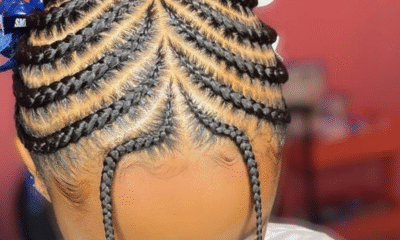
 KIDS HAIRSTYLES4 months ago
KIDS HAIRSTYLES4 months ago30 Easy and Adorable Back to School Hairstyles For Kids
-
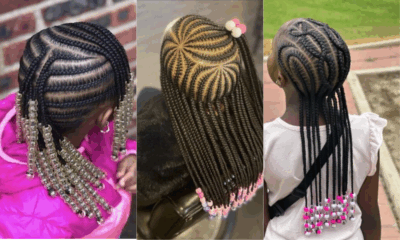
 KIDS HAIRSTYLES2 months ago
KIDS HAIRSTYLES2 months ago20 Back to School Hair style for Black Kids hair
-

 WEDDING9 months ago
WEDDING9 months ago30 African Wedding Dresses That’ll Leave Everyone Speechless!
-

 MEN HAIRSTYLES10 months ago
MEN HAIRSTYLES10 months ago20 Best Back to School Hair Cut For black kids





























